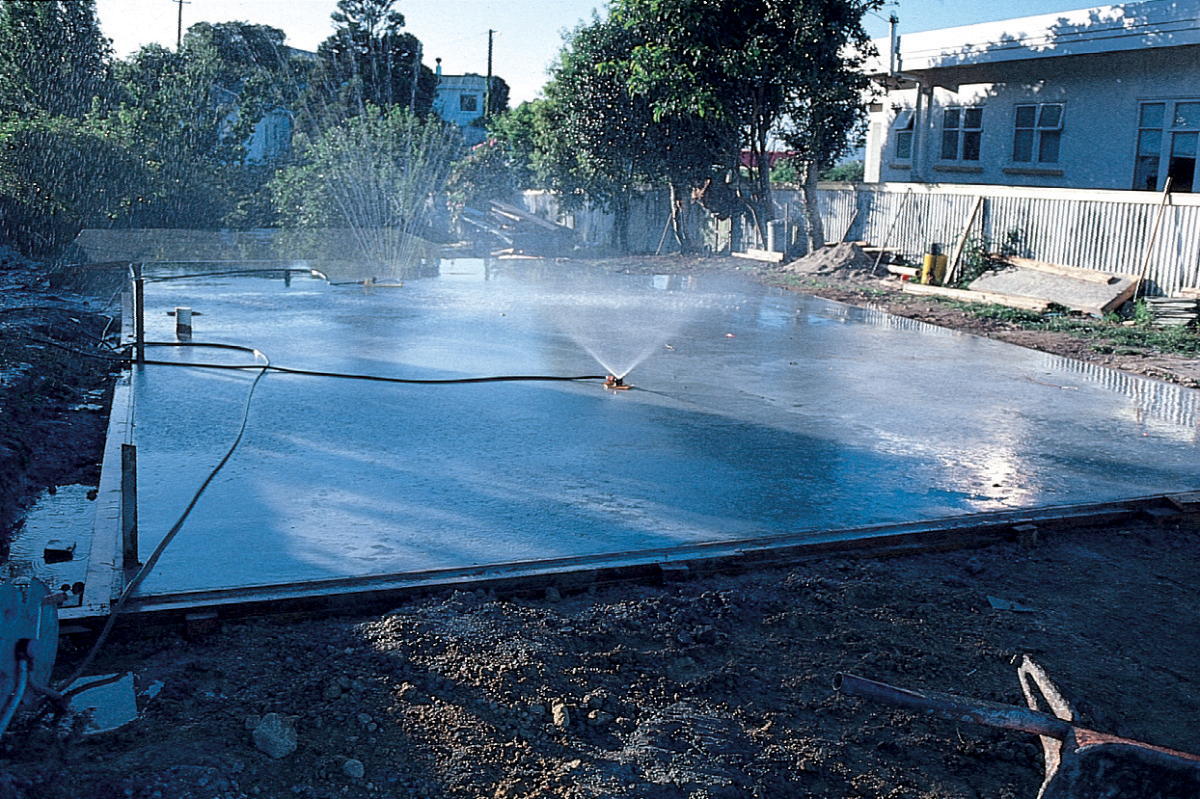Paving the way – Construction (Part 3)
01 Aug 2013, Prove Your Know How, Technical

The basic function of residential pavements, such as driveways, paths and patios, is to provide safe and easy access onto or around a property. Concrete is typically used to not only provide a durable paving surface (sloped, to provide surface water run-off) but one which can also incorporate a wide range of decorative finishes to complement the design and landscaping of the residence.
While creating a concrete pavement is relatively straightforward, there are a number of design and construction aspects that need to be considered in order to produce a finished product that satisfies the functional and aesthetic requirements of the homeowners.
“When concrete is not cured (ie is allowed to dry out too quickly), a significant reduction in its strength results
Curing of concrete
Residential pavements for foot and light vehicular traffic should be cured for a minimum period of three days. This should be increased to seven days if located near the coast (within 1 km) and/or subject to heavier traffic. Curing allows the concrete to achieve its potential strength and durability. When concrete is not cured (ie is allowed to dry out too quickly), a significant reduction in its strength results. The reduction of concrete strength has a significant effect on abrasion resistance of the surface of the pavement when used by vehicular traffic. One of the main contributors to surface wear and dusting problems is the reduction in strength due to inadequate compaction and curing.
Typical methods of curing concrete pavements include:
- Covering the concrete with an impermeable membrane (eg plastic sheeting weighted in contact with the surface or a chemical curing compound complying with AS 3799 or ASTM C309).
- Keeping any exposed surfaces continuously wet (eg ponding or spraying with water).
Wetting at intervals (eg in the morning and afternoon) does not keep the concrete continuously moist, particularly in hot weather conditions, and is therefore not regarded as an adequate method.
Black plastic should not be used for curing of external surfaces, as this may increase heat gain and cause problems with slab curling.
“One of the main contributors to surface wear and dusting problems is the reduction in strength due to inadequate compaction and curing
Decorative concrete pavements should not be cured with plastic sheeting, damp sand or wet hessian, as these materials may promote uneven colour or staining.
Chemical curing compounds compatible with the sealer, or the sealer itself, if complying with the requirements of a chemical curing compound, should be used for these types of decorative pavements.
Hot and cold weather conditions
Concrete should not be placed at ambient temperatures higher than 30°C or lower than 5°C with the temperature descending or below 2°C with the temperature ascending. In hot weather, early loss of moisture from the slab causing plastic cracking of the surface can occur as the rate of evaporative drying exceeds the rate of bleeding, resulting in the surface drying out prematurely.
A combination of hot weather, low humidity and windy conditions increases the risk of plastic cracking. The use of an evaporative retarder, such as aliphatic alcohol (antivap), will slow down the rate of evaporation. The use of windbreaks and shade covers will help but may not be practical in extreme weather.
In cold weather, delayed setting and finishing times, slower strength gain and even freezing of the surface are of concern. Concrete should be protected from freezing for at least 24 hours after finishing by covering the surface with insulating blankets.
Where there is a high temperature swing, in excess of 13°C from daytime to nighttime following the pour, the concrete may crack and should be covered with an insulating blanket.
About CCANZ
This article contains information from CCANZ’s Information Bulletin 80 Residential Concrete Driveways and Paths, which provides guidance on the planning, design, construction, maintenance and specification aspects that need to be considered to ensure a successful concrete paving project. Content from Standards New Zealand in this bulletin has been reproduced by CCANZ with permission from Standards New Zealand under licence 000997. Any New Zealand Standard referred to in this bulletin can be purchased from Standards New Zealand by telephoning 0800 782 632 or visiting www.standards.co.nz
CCANZ would also like to thank Cement Concrete Aggregates Australia (CCAA) for their assistance in producing the bulletin. To download the full Bulletin visit the CCANZ website – www.ccanz.org.nz
Register to earn LBP Points Sign in



